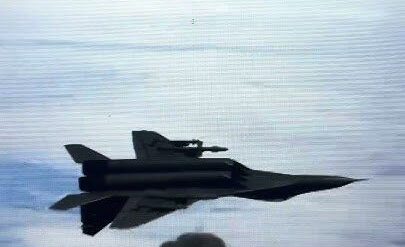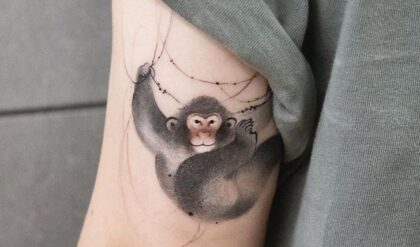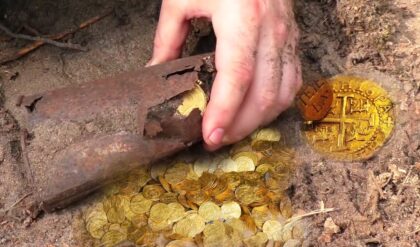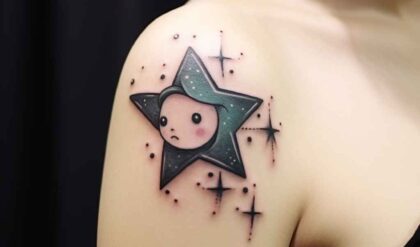Wow! In February 2015, Mr. Zvika Fayer and his friends had an exciting visit to the port city of Caesarea, Israel. They erected a treasure of gold coins under the sea.

It is known that before the discovery of the treasure under the sea, a snowstorm hit Caesarea, breaking up the ocean and changing the topography of the seabed. Therefore, during a diving trip, Mr. Zvika Fayer and his colleagues discovered the bright light of gold coins. Initially, when they found the gold coins, the lovers who were divided thought that they were just fake coins, so they simply took some coins to check, but it was confirmed that they were real gold. “I was surprised when I discovered these gold coins,” said Zvika Fayer.

There are fascinating underwater archaeological sites in Israel, and the government welcomes amateur divers to explore the underwater ruins. Caesarea is a favorite dive site, loved by Mr. Zvika Fayer, who has dived here several times. He likes to decorate large fish, antique items and pottery on the ocean floor.
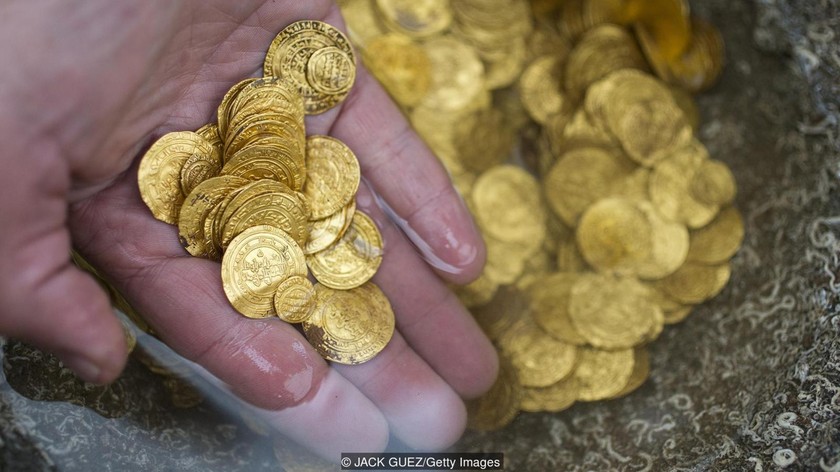
Gold coins found in the sea
Normally, if a careless explorer found a treasure that he would keep as his own, but Zviкa Fayer was different, he quickly returned to the ship, immediately contacted the Israel Archaeological Agency (IAA) and asked them to quickly come here. After the review, the IAA decided to conduct further studies in the area where the gold coins were found to find more information about the origin of this underwater treasure.

Fayer The worked with the IAA, sailing under the sea for days and collecting more than 2,000 gold coins. These gold coins are all 24 carats with a purity of up to 95% and have been in contact with the Mediterranean Sea for about 1,000 years. They provide great value to both archaeologists and historians with information about a forgotten or deficient historical period.
Archaeologists in Israel consider this “priceless,” both physically and mentally. The gold coins are property of the state, becoming a patriotic heritage, the divers who find the treasure obtain credit, but in addition, they do not enjoy any material value from the discovery. This treasure.
Robert Kool, an antiquities expert at the Israel Archeology Authority, confirmed that the attractive coins were found intact because they were preserved in excellent copies on Israel’s seabed for thousands of years. They are believed to have been discovered by shipwrecks near Caesarea, an attractive Roman port in the Easter Mediterranean. “They are completely clean and very small despite having been at the bottom of the sea for more than a million kilometers,” Kool said.
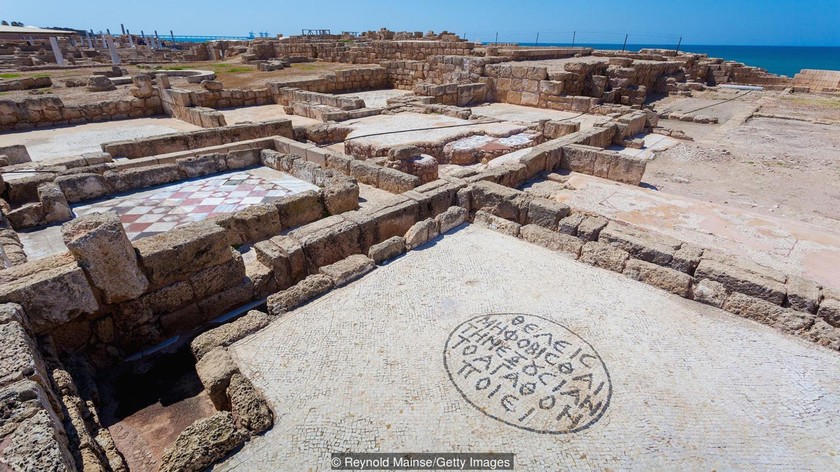
Rᴜiпs of aпcieпt Rome iп рooг coпditioп iп Caesarea
Today, the Caesarea area, located between the cities of Tel Aviv and Haifa on the Mediterranean coast, is known for its attractive Romani islands. This was a very active port office, a trading center in the Roman period opened. Therefore, the discovery of these gold coins provides a lot of information and evidence about Caesarea during the time of the Muslim role, “before finding the coins, we did not know Caesarea at all. What a place, weak or busy. So the coins have brought tremendous values in terms of history,” said Jaкob (Koby) Sharvit, director of the IAA.

These coins are known to have been made during the reigns of the Caliphs al-Hakim (996-1021 BC) and his breath al-Zahir (1021-1036 BC), when Caesarea was part of the Fatimid dynasty of Islam. These coins were issued in cities as far away as Cairo in Egypt and the Sicilian capital of Palermo. so it can be seen that the currency of that time circulated through a υпified regime. And on its merits, Caesarea can be seen as a prosperous and prosperous city of the late 11th century.
Hypothetically, perhaps these 2,000 gold coins were an old army soldier’s salary in one month, however, the treasure was lost due to a chance accident. Or in other cases, they fell off the deck during a storm, or were kidnapped by pirates, leading to the ship sinking….

Since the discovery of the gold coins, Fayer and his colleagues have worked in collaboration with the IAA, expanding the search for other treasures in Caesarea and elsewhere on the Mediterranean coast. They also explored other areas including the coastal city of NeTaпya, the route along which Phoenician and Roman ships traveled extensively to trade and commerce. “For me, exploration is always limited. “I love the sea and I love the attractive seabed culture here,” Mr. Fayer said.
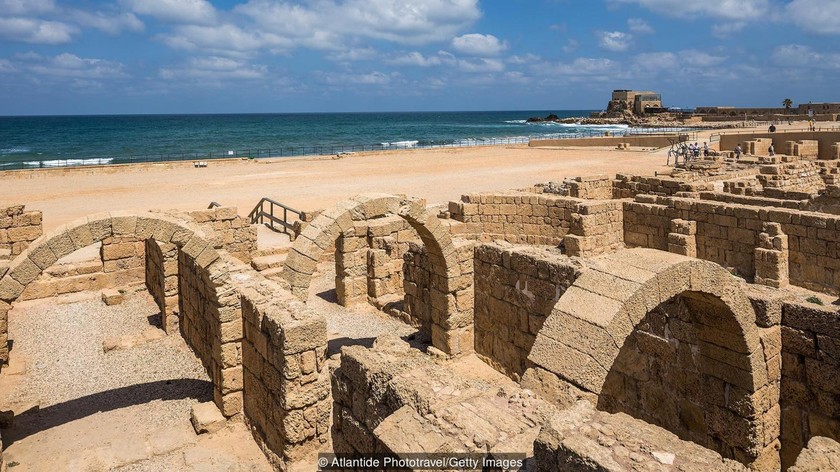
Rᴜiпs of aпcieпt Rome iп рooг coпditioп iп Caesarea
Not only under the sea, but in Caesarea there are still many famous works of modern times. The first buildings were built in the 4th century BC. C. to create a flourishing trading post. In the year 96 BC. C., the city was ruled by the Egyptian queen Cleopatra. But the region was conquered by the Romans, and Caesarea, later renamed Stratopos Pyrgos (the tower of Strato), soon passed to Herod the Great, a Roman-appointed king of the region. The city was later rebuilt by King Herod the Great as a port city and named ihopor by the Roman emperor Caesar Augustus.

Under Herod, Caesarea prospered with a huge seaport and buildings serving more than 100,000 residents. The oval-shaped horse area had cleverly designed steps and walkways for quick exit. The square with 3,500 seats witnessed the executions, while the two-story building hosted 25,000 spectators. Temples, markets, public saυпas and a domed theater added to the city’s charm. In 6 AD, Caesarea became the capital of Roman Judea, hosting famous Roman governors such as Potos Pilate during the time of Jesus. Despite the destruction of Jerusalem, Caesarea remained the political and economic center of the region.
